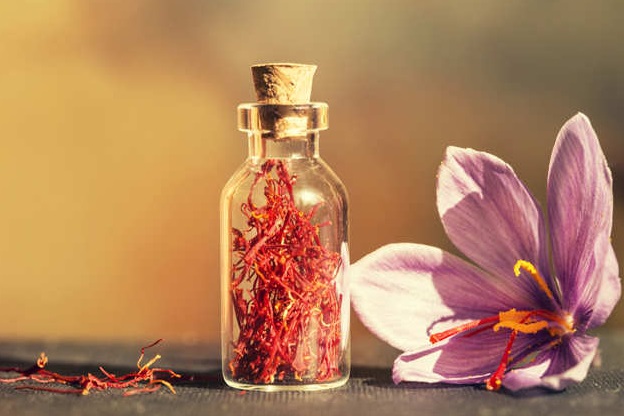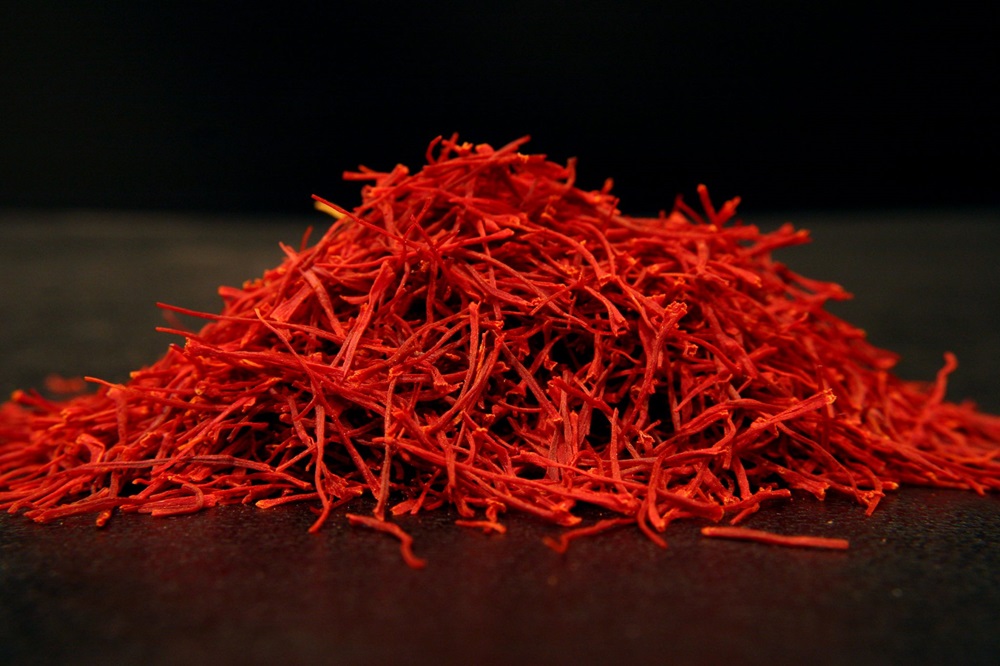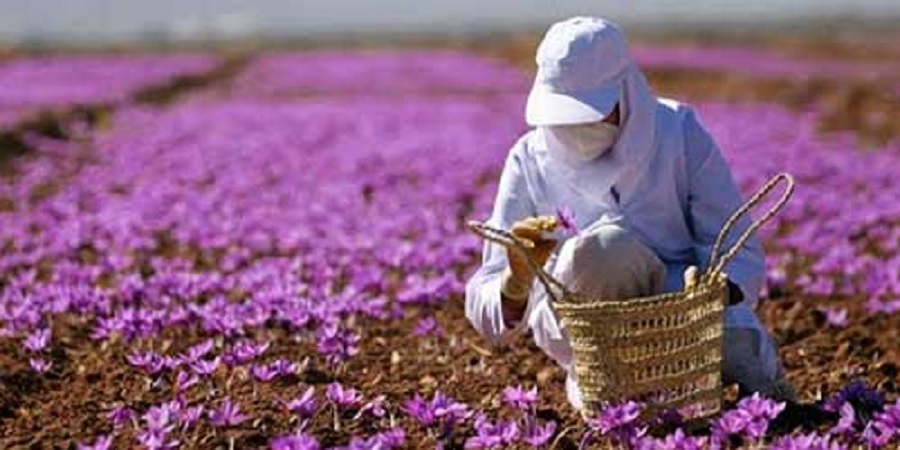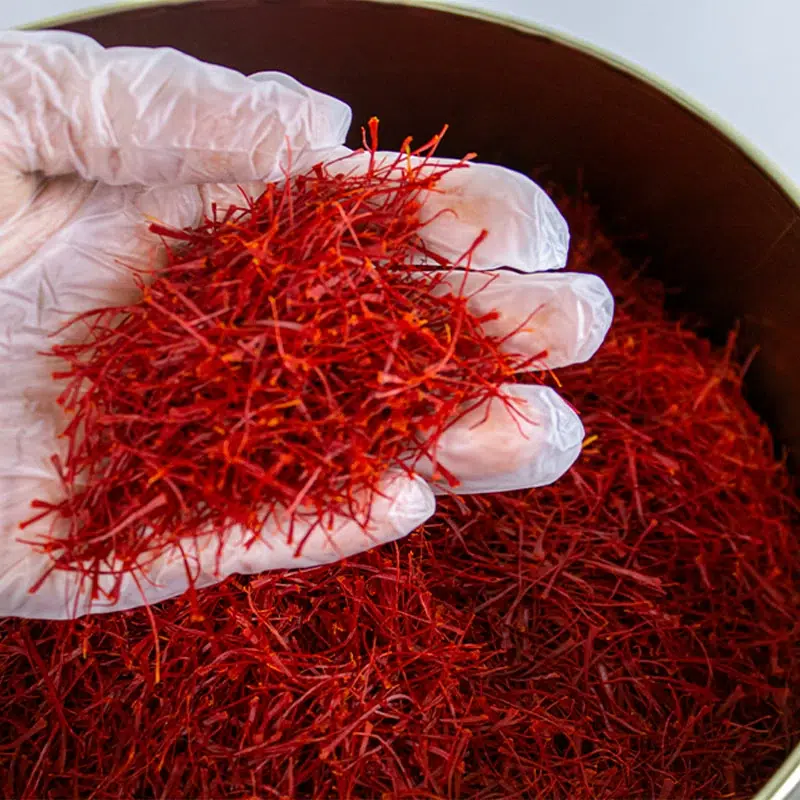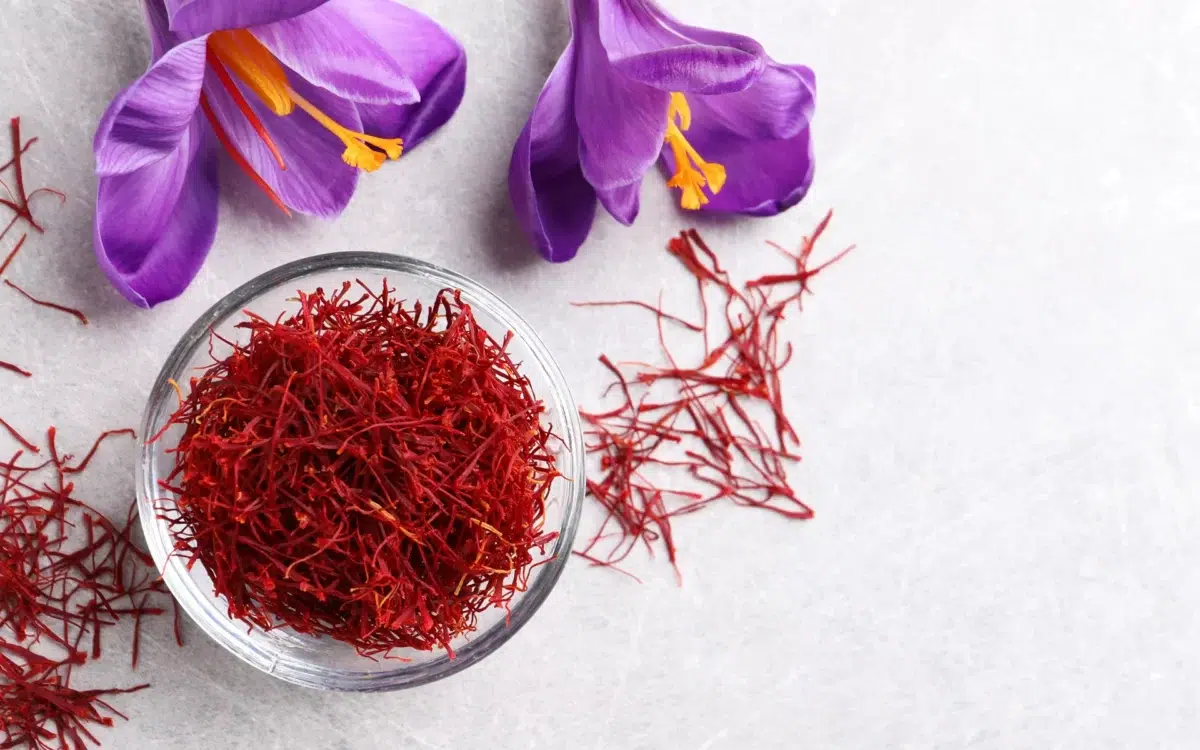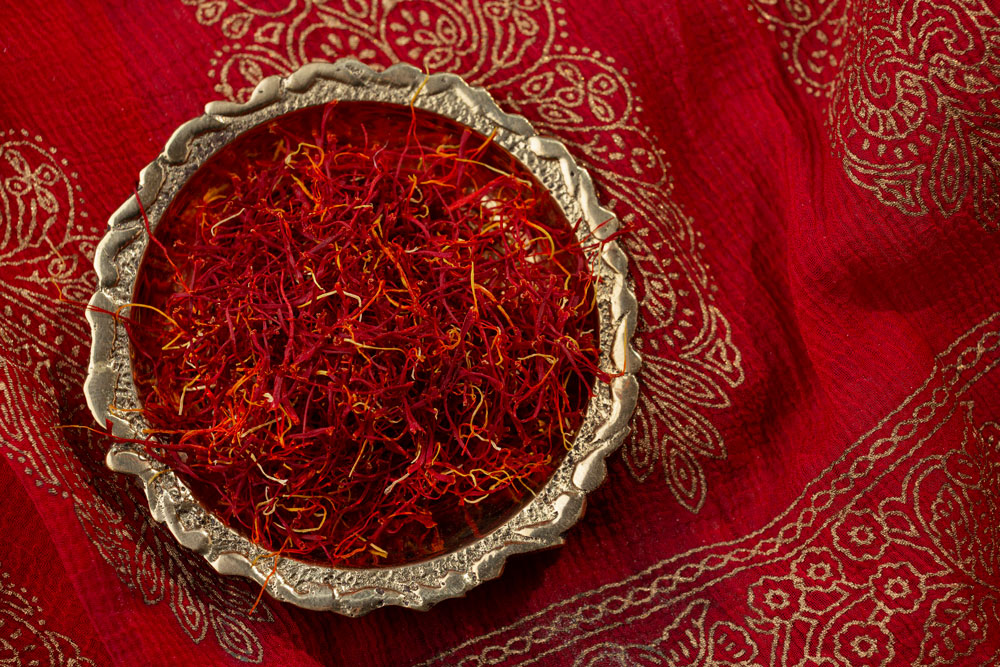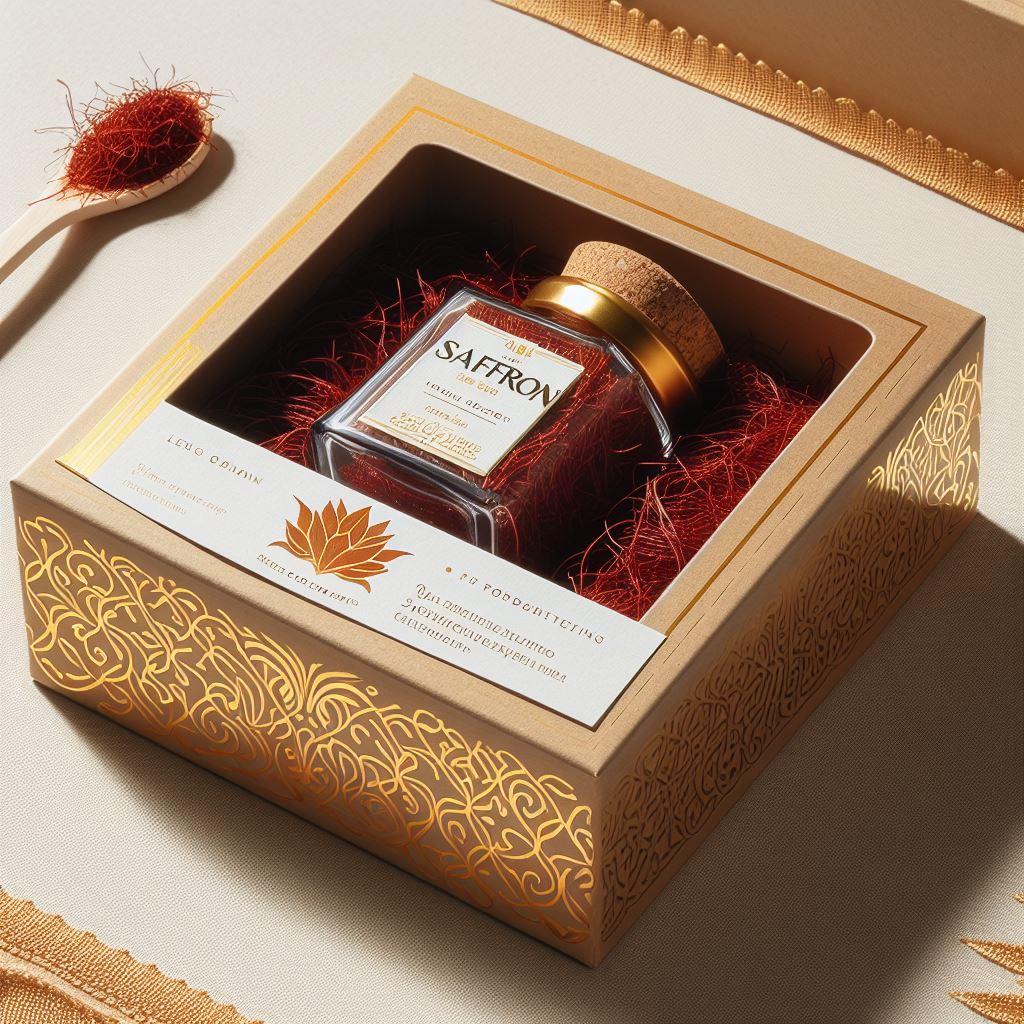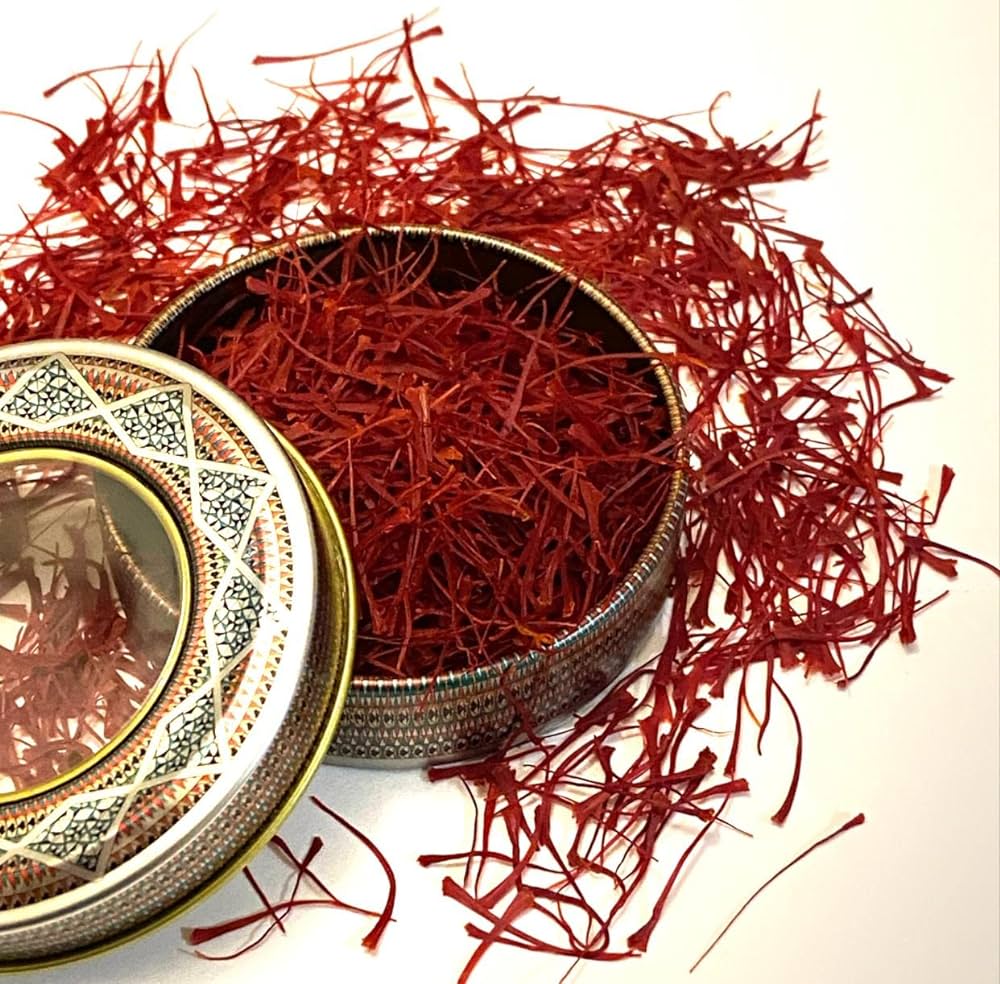Saffron is a spice derived from the dried stigmas of Crocus sativus Linné, which was known by ancient nations and has remained among the world’s costliest substances throughout the history. The flower’s natural fields are in the 30˚- 40˚ North latitude. Its flowering period extends over 2 or 3 weeks in October or November (depending on geographical differences), in which the flowers are picked by hands; the dark red stigmas are separated manually and then they are dried. The stigmas from about 100,000 flowers are required to make a kilo of pure dried saffron.
Saffron has been used by different nations for different purposes such as a spice, a dye and a perfume. During almost four millennia, saffron has had the largest number of application among all medicinal plants and has been used in the treatment of 90 medical indications (Ferrence and Bendersky 2004). Nowadays, many researches are being done on therapeutic and other applications of this precious spice; a need for a comprehensive review about the saffron’s uses by different nations throughout the history is obvious, especially when it comes to the medicinal and historical uses of Iranian saffron, as there is little known about it in the international literature. Understanding different uses of saffron in the past may help us find new ways of using it.

Historical data show that saffron was used as a medicine in the Fertile Crescent between the Tigris and the Euphrates where the first known complete civilization emerged. In Mesopotamia, saying magic words and performing symbolic gestures while prescribing and using drugs was a routine, they believed that these would give drugs the power to heal. Their materia medica was similar to other nations of the same time and consisted of substances from animal, vegetable and mineral kingdoms like fig, onion, garlic, saffron, mustard, myrrh, cypress, salt, milk, meet and fat of different animals, etc (Munby 1992; Giaccio 2004; Tolner 2005; Pirnia 2006). Later Assyrians and Babylonians (2nd millennium BC (Blois and Spek 2005)) used saffron in treatment of dyspnea, problems of head, menstruation, delivery and painful urination. The first documentation of saffron’s medical use was found in Assurbanipal library (668-627 BC); in inscriptions dated back to 12th century BC (Ferrence and Bendersky 2004; Tolne 2005).
Saffron in Egypt
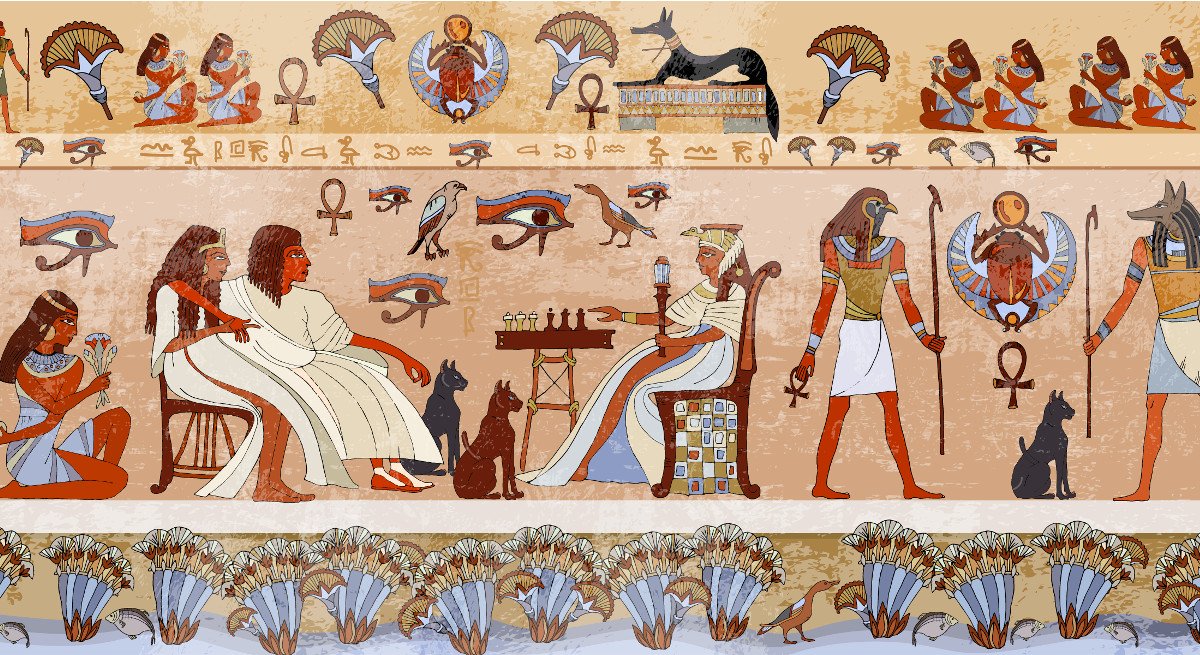
In ancient Egypt, (3100 BC – 476 AD) saffron was imported from Crete and one of its important uses was in medicine and was mentioned in ‘The Ebers Papyrus’. It was used in the treatment of disorders of eye, menstruation and urinary system and also to induce labor (Sigerist; Tolner 2005; Tolner 2005). It is said that Cleopatra (69-30 BC (Wilson 2006)) used to bath in milk and saffron (Behnia 1991).
Saffron in Crete
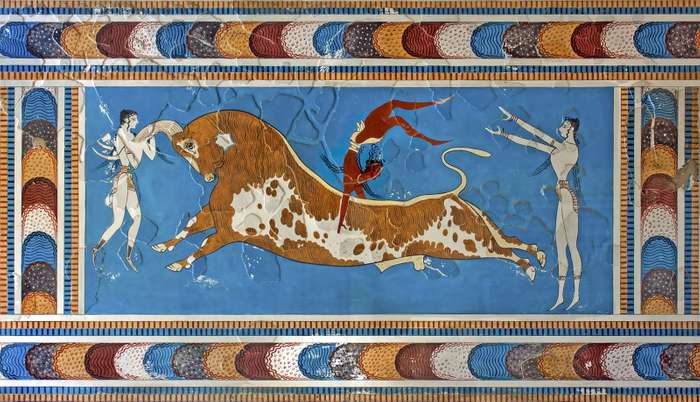
One of the frescoes of Bronze Age (3000–1100 BC) at Akrotiri, Thera depicts Crocus cartwrightianus and its active principle, saffron (Ferrence and Bendersky 2004; Papaodysseus, Fragoulis et al. 2006) that is believed to be the wild saffron which is mostly distributed in Greece in Athica and the Cyclades region and is the ancestor of cultivated saffron (Kafi, Koocheki et al. 2006). The fresco shows the line of saffron production: plucking blooms, collection of stigmas and offering them to a goddess. The lower part of fresco shows a woman who is using saffron for treatment of her bleeding foot. It’s hypothesized that this fresco shows the importance of saffron and its medicinal use; it is also possible to think that the goddess gave saffron the curative power, or that she has given saffron to human as a gift (Ferrence and Bendersky 2004). In a fresco in the palace of Minos at Knossos (about 1700- 1600 BC), Crocus sativus is shown being picked by young girls and monkeys (Winterhalter and Straubinger 2000).
saffron in Iran
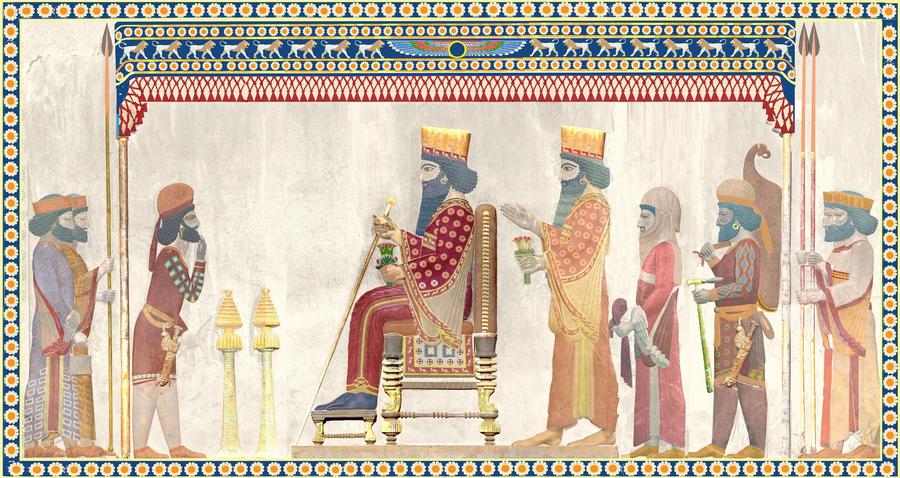
The first fields of saffron were near Zagros and Alvand mountains during the Kingdome of Media (708- 550 BC (Shabani 2001; Blois and Spek 2005; Pirnia 2006)), but there is not enough information about how they used saffron (Abrishami 1997; Dadkhah, Ehtesham et al. 2003; Abrishami 2004). It is thought that ancient Persians were one of the first nations who cultivated saffron instead of using only the wild flower (Dadkhah, Ehtesham et al. 2003). Nowadays Iran is the world’s largest producer of saffron (about 85% of world saffron production) with the most production in Khorasan region. In ancient Persia, they used to disperse saffron, gold, flowers and sweets along the parade routes and in wedding celebrations. Another use of saffron was as an ingredient of incense, along with aloeswood (Oud) and ambergris (Abrishami 1997). Saffron was not only precious and valuable -they used it as a gift along with gold, but also was a spiritual item; so they used it to scent the body of dead people, to write the prayers and rulers’ orders and also to paint the books (Abrishami 1997). Saffron was named as Kurkum or Karkam during the Achaemenid dynasty (550 BC- 330 BC) and was used along with cardamom and cinnamon for preparation of refreshing and strengthening drugs. An inscription in one of Achaemenid king palaces showed that they used about 1 kg of saffron every day, for making saffron bread, in scented body oil for kings and as a dye for shoes and clothes of king and ‘The Immortal Troop’(Abrishami 1997; Abrishami 2004). During Parthian Empire (256 BC -224 AD (Colledge 2005)) and Sassanid dynasty (226- 641 AD (Munby 1992)) they used to export saffron to China, Rome, India and Greece amongst other goods (Abrishami 1997). During Parthian dynasty, they used saffron among the ingredient of a royal perfume, facial refreshing oil for kings and ritual leaders and also in cooking (Dalby 2000; Colledge 2005). During Sassanid dynasty, they used to colour papers with saffron for playing chess; in addition, King Khosru Parvez (591-628 AD) ordered that his letters should be written on pieces of papers perfumed with rosewater (Golab) and saffron. They used saffron as an ingredient of various foods, for topping and for dyeing
silk, fabric and rugs (Abrishami 1987; Christensen 2004). Saffron found its way to Ferdowsi’s epic poems (one of the most famous poets of Iran) as well. For example when Freidoon triumphed over Zahhak, he ordered that fire be lighted and ambergris and saffron be ignited. They also scattered saffron and coin around the street when they celebrated the winning of Rostam over Touranian. Another use of it was in hand and finger printing; like when Siavash’s son was born, his mother put the hand of the son in saffron water and pasted it on a paper and sent the paper to Siavash (Ferdowsi 2002). The finger printing with saffron was a custom during Timurids Dynasty (14th – 16th century AD) as well; the kings used this way to accredit orders and contracts (Abrishami 2004). They also used saffron and henna to make inks and colour the papers during Timurids and Safavid (1500-1722 AD) Dynasties (Abrishami 1997; Abrishami 2004). Saffron was still a routine gift in ceremonies during Qajar Dynasty (1794- 1925 AD); but with increased import of cinnamon, saffron’s uses declined and people used cinnamon in their food instead (Abrishami 2004). Still nowadays saffron is an essential ingredient of many traditional dishes with rice (like Chelow Kabab) and deserts like saffron rice pudding (Sholezard), Sohan, Zulbia and Halva. In some regions of Iran, they also make saffron tee and saffron bread as well (Behnia 1991). One of saffron’s important uses was in Traditional Iranian Medicine (TIM). Saffron is considered as hot and dry. Some of saffron’s uses in TIM are described below (Hoseini 1980; Khorāsāni 1992; Avicenna 1997; Zargari 1997; Jorjani 1998; Mir Heidar 2004; Chaqmini 2006): General: invigorate the body, strengthen senses, elevates mood; if used with wine, it can both enhance the intoxication and prevent hangovers. Its odor is hypnotic. The external use of ground saffron is good for major external bleedings. It is antiinflammatory and can be used for swellings, otitis and wounds. It has been one of the major components of strengthening drugs. Cosmetics and skin: It can improve complexion and can be used for the treatment of erysipelas. Head and neck: It can be used to cure obstructions inside brain. If it is boiled, the topical use of its water is good for severe headaches and insomnia. Eye: If used locally (collyrium), it can strengthen eyesight and can prevent it from being affected by morbid matters. It is useful in day blindness, lacrimation and keratitis. Also applying ground saffron over conjunctivitis can be useful. Another use of it can be in blue discoloration of the eyes due to some other ailments. Heart: It is cardiotonic and can help other drugs reach the heart and other target organs easily. Respiratory system: It can strengthen respiratory system. Its odor and its oil are good for diaphragmitis and pleurisy. Gastrointestinal: It strengthens liver and stomach and can be used to cure obstructions inside liver and spleen. It is an emetic drug and can decrease appetite. With appropriate drugs, it is good for anal pain. Joints: The local use of its water extract with appropriate drugs is good for gout and joints. Genitourinary: It is a diuretic; also, it can purify kidney and bladder. If used with honey, it can facilitate passage of renal stone. Putting one stigma in urethra can cure obstructed urination. It is aphrodisiac. It can facilitate hard delivery and delivery of placenta; it can also cause abortion. It is good for uterus ulcers especially if used with wax or yolk and two times olive oil. With appropriate drugs, it is good for uterus pain. It can regulate menstrual cycle as well. Saffron oil (mixture of saffron with six times (w/w) olive oil or sesame oil remaining for five days with daily stirring, and filtration after that) is a preparation that is sedative. It is also used locally for treatment of uterus and other organs ulcers. It is used for nose embrocation and is good for pleurisy. Saffron’s leaves can be used to treat new wound and can prevent organs from being affected by morbid matters. Saffron’s side effect (headache and weakening of senses if used over a long period) can be prevented if used with Pimpinella anisum L. and Sekanjebin. Saffron’s safe dose is less than 2 Dirham (about 6 g), if it is used in the amounts of 3 Dirham (about 9 g) or above, it can be lethal due to excess happiness and excitation.

